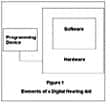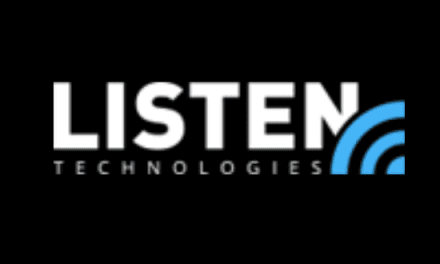No more telephone tag: Your order information is now only a click away
In March 2003, HIMSA’s Scott Peterson1 asked Hearing Review readers to imagine a time when hearing aid orders would be sent to manufacturers over the Internet—a time when hearing care professionals would be able to track orders, repairs, and returns with the click of a mouse instead of a call to customer service. The time for imagining these things is over: eTONA is here.
After more than two years of cooperative and continuous effort, HIMSA is pleased to announce that electronic Transfer of NOAH Actions (eTONA) is a reality. This joint effort of the Hearing Industries Association (HIA) and HIMSA (which is funded and guided by HIMSA owners GN ReSound, Oticon, Phonak, Siemens, Starkey, and Widex) represents the largest development project for the company since the release of NOAH 3. The changes to NOAH 3 are complete and companies that utilize the HIMSA platform are finalizing their software and deploying eTONA for testing in hearing care professionals’ offices.
While eTONA offers hearing care professionals many benefits, perhaps the most important is replacing paper order and repair forms with dynamic product order software modules.
Benefits Over Paper Order Forms
One of the most difficult tasks for a busy hearing care professional is to keep current on all the technology options available from the hearing aid industry. In order to accommodate all possible configurations without the need for multiple forms, paper order forms need to be very comprehensive. Unfortunately, these very comprehensive forms can also be very confusing. In my own clinical practice, I can recall many times when I looked at a new order or repair form and had to use a ruler to make sure I was marking the choices I really wanted.
Electronic orders created in product order modules address this problem by only revealing options and accessories that are compatible with choices made earlier in the order process. For example, if the style chosen is CIC, the option for telecoil and Direct Audio Input (DAI) will be hidden. If the hearing care professional changes the choice to BTE, both of these would be revealed.
In addition to fail-safe configurations, the product order modules will use data stored in NOAH, such as the patient demographics and audiogram to automatically complete sections for the order form. These parts of the paper order form are usually completed by hand or with a rubber stamp. This allows forms to be completed more accurately and completely. Similarly, this allows the manufacturer to process and complete your order more efficiently while providing additional time savings and convenience to the hearing care professional.
A final benefit of electronic orders is that the hearing care professional will no longer have to store and maintain a large stock of paper order, repair, and return for credit forms. This may seem like a minor thing, but if one considers all the time required for paper forms maintenance, the savings afforded by using electronic orders can be significant. This also relates back to the accuracy issue. When one uses an out-dated form, product choices and features must be handwritten in the margins or the typically scarce “special instructions” sections on these paper forms. Ensuring that these notes are clearly understood practically guarantees that a customer service phone call will be made, which typically takes more time than expected.
Consider how much time is spent on order-related telephone calls in the course of an average week. Now consider how much time is added when the hearing care professional is unavailable to take the call and the customer service representative must leave a message. That message must be returned, which leads to more waiting and costs the hearing care professional more time. This time, while important, creates a serious problem in regard to productivity. Not only does the telephone time fail to generate income, but it actually takes the dispensing professional away from seeing patients or managing the practice—both of which generate revenue.
Of course, calls related to fitting advice or fine tuning are best handled by a live person, but the point is that many routine tasks can be completed more efficiently and at a lower cost if they are handled automatically via eTONA. Some of these tasks include automatic tracking of orders and providing status updates to allow hearing care professionals to keep an eye on their orders from their desktop or laptop computer.
After some experience with the production timetable of a particular manufacturer, many hearing care professionals may schedule appointments a few days after expected delivery. If, for whatever reason, the order is not delivered, the patient wastes a trip, and the hearing care professional loses an appointment slot and their professional image may suffer as the patient’s frustration rises.

The eTONA transaction browser provides a quick and easy way to review the status of orders, repairs, and returns. Depending on how the preferences are set, eTONA will automatically check for status updates several times a day. This means that at virtually any time of the business day, the hearing care professional will know the current status of all orders, repairs, and returns for all patients, and for all manufacturers simply by looking at one computer screen (Figure 1). A good way to use this tool is to check for status updates in the morning and just before closing the office at night. This allows for early identification of issues that may delay orders providing enough time to contact patients and reschedule appointments. This can also aid in more efficiently scheduling patients.
Additional points of interest of the transaction include the ability to sort entries by simply clicking on the column headings, opening transactions with a double-click, and the ability to right-click on a shipped transaction to get detailed tracking information. Simply pointing the cursor on an entry will open a “tool tip” with a summary of the tracking information.
Based on conversations with hearing care professionals about eTONA at trade shows and conferences this year, HIMSA feels that the overview shown in Figure 1 will be the most commonly used screen in the transactions browser. However, like all of NOAH 3, eTONA is designed to be flexible enough to meet the needs of a wide range of users. Those looking for more specific ways to track orders, repairs, and returns can use the status update icons in the left column to limit the view to transactions that are currently transmitted, received, accepted, or in any other stage of the production and delivery process.
Digital Ear Impressions
In the past several years, the majority of hearing aid manufacturers and a few earmold manufacturers have evolved their production lines from casting impressions in silicone to scanning them using lasers.2-5 More recently, the promise of affordable impression scanning in the dispensing office became a reality when Siemens announced the iScan system at the 2005 AAA convention.6 eTONA was designed with these innovations in mind. It has been developed to handle ear impression scans as attachments to the product orders created by the order modules mentioned above. As other scanners become available in the near future, eTONA will also support them.
One exciting benefit of being able to attach in-office impression scans to orders transmitted via eTONA is the ability to replace lost or damaged hearing instruments more quickly. While all patients will appreciate less time without their instruments, this will be particularly important for the geriatric and pediatric populations. For these patients even one extra day without amplification represents a significant communication and lifestyle barrier.
Less time between order and delivery may also reduce the chance of patients second-guessing the purchase and use of needed hearing instruments. For hearing care professionals, this fully electronic order process means less packing and shipping—including those after-hours trips to the drop box and the stress of completing all orders before “the last pickup.”
While this new technology sounds great to the techno-geek audiologist at HIMSA, the reality is that it will take quite a while before the majority of dispensing offices have scanners. This fact, however, should not deter you from beginning to move away from paper orders.
Security and Your Practice
With the advent of the Health Insurance Portability and Accountability Act (HIPAA) and the recent institution of HIPAA Security Rules (eg, see Popp & Lane7 and the May HR News, p 14), security of your patients’ electronic information is a vital concern.
While it is true that eTONA does use the Internet to transmit orders and receive status updates, it does not require that the user open a Web browser and type in an Internet address to accomplish a task. The communication is handled in the background of the application and does not require manual intervention. Additionally, HIMSA has paid a lot of attention to HIPAA security regulations, devising eTONA so that it securely transmits orders and receives status updates using encrypted data. In other words, the system encrypts product orders and status updates by completely rearranging the information with numbers and letters, rendering it unreadable as the data pass between the dispensing professional’s office and the manufacturer. This is essentially the same high-security system banks and other health care systems use to ensure that their data is safe from prying eyes.
Conclusion
As of the recent release of NOAH 3.5.2, eTONA is available to dispensing professionals. After installing at least one product order module, users will reap the benefits of improved accuracy, legibility, and efficiency when creating orders for hearing instruments and related products. Those orders will be sent electronically and tracked automatically using status updates delivered to your computer. This increased efficiency will free up hearing care professionals—so you can focus attention on solving problems and seeing patients rather than asking, “Where’s my order?”

|
Correspondence can be addressed to HR or Brad Ingrao, MSEd, HIMSA Inc, 2550 University Ave W, Ste 241N, St Paul, MN 55114; email: [email protected].
References
1. Peterson S. Made to order: How eTONA will serve you and your clients. The Hearing Review. 2003;10(3):38-41,95.
2. Darkes P, Voll L. Shaping the future of shell technology with digital mechanics. The Hearing Review. 2002;9(4):56-57,76.
3. Lesiecki W. Shell technology: The shape of things to come in e-business. The Hearing Review. 2002;9(10):48-51.
4. Cortez R, Dinulescu N, Skafte K, Olson B, Kennan D, Kuk K. Changing with the times: Applying digital technology to hearing aid shell manufacturing. The Hearing Review. 2004;11(3):30-38.
5. Pirzanski C, Berge B. Is the end near for acoustic feedback? The Hearing Review. 2004;11(4):18-23.
6. Siemens Hearing Instruments. How to scan ear impressions right in your office. The Hearing Review. 2005;12(7):48.
7. Popp P, Lane B. HIPAA security rules and compliance specifications. The Hearing Review. 2004;11(7):32-35,55.




